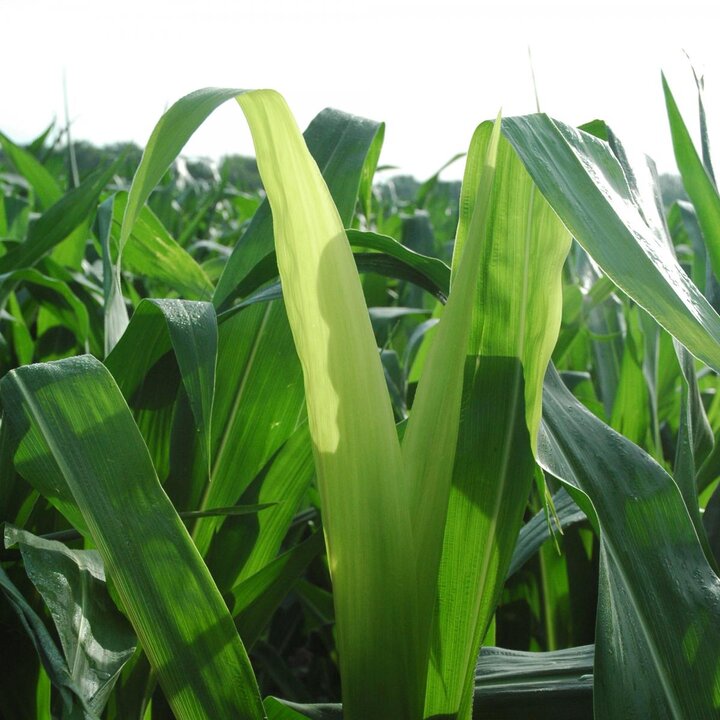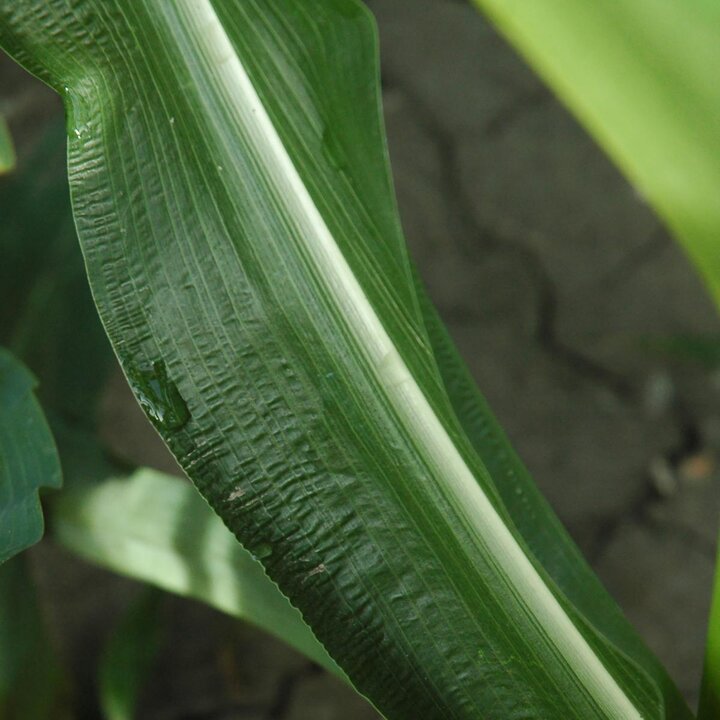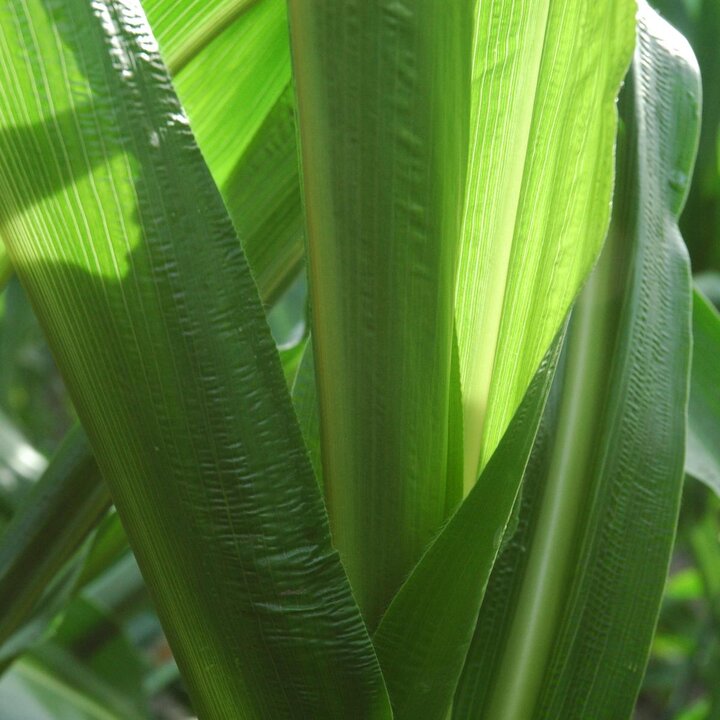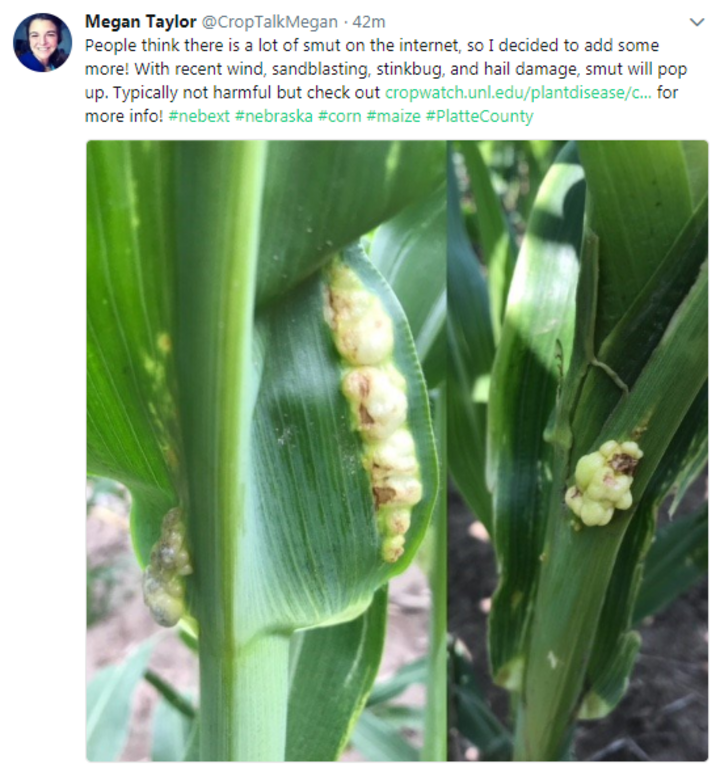


Figures 1-3. (left) Yellow leaves emerging from being entrapped in the whorl. (mid to right) Rippled or wavy corn leaves are evidence of this earlier leaf entrapment.
Roger Elmore, Extension Cropping Systems Agronomist: Rapid growth of corn in past few days has again led to twisted whorls in specific hybrids at least in south central and eastern Nebraska. (Similar occurrence in 2017.) Most entrapped leaves will emerge from this situation which some describe as being “buggy whipped.” Use of specific herbicides can result in these symptoms too. If the new, light-starved leaves do break free of the constriction, they will be bright yellow and quite noticeable waving above the canopy (Figure 1) until they capture enough sunlight and turn green.
Rippled or wavy areas of leaves will evidence this throughout the remaining growing season (Figures 2-3). Yield will likely not be affected dramatically. (Photos by Roger Elmore, Lancaster County, June 13, 2018)
Megan Taylor, Extension Educator in Platte County: From Platte, Boone, and Nance counties I am seeing significant improvement in fields from last week’s hail storm. New growth in soybeans and corn has emerged strongly. There have been a few people replanting soybeans, but this was likely caused by hail and the significant rainfall events that occurred over the past several weeks. Corn is anywhere from V4 to V7 growth stage. Soybeans are anywhere from emergence to R1. With some of the open wounds caused by hail, wind, and sandblasting I am seeing the emergence of smut in our corn fields. In soybeans, the main injuries are associated with spraying, but there were isolated pockets of sun scald in the Northern parts of the county. Many growers cut alfalfa, because of high levels of alfalfa weevil and potato leaf hopper. Overall, weed control through all three counties is pretty strong, but waterhemp and volunteer corn continues to plague some fields. (6/15/18)
Tyler Williams, Extension Educator in Lancaster County: Monday night's storms missed Lincoln, but hit the eastern areas of Cass and Otoe counties pretty hard, causing damage from hail and high winds. In southern Lancaster County soybeans are at V3-V5 with some purple flowers. Corn is at V4-V6 with some V8-V10 in corn. There’s not really any moisture stress in eastern Lancaster County and a little in the western half. We’re seeing some yellow corn on hillsides.(6/12/18)

John Wilson, Extension Educator in Burt County: Corn is in the sixth to seventh leaf stage, some at V3-4. Soybeans have 3rd to 4th trifoliate leaves. We’ve been fortunate and caught some timely rains. Monday in Washington County some of the corn was actually starting to curl a bit in the heat. Last week a small area in Burt County west of Oakland and a larger area in Cuming County had significant hail, damaging an area about one mile wide by several miles long. A few of those fields are being replanted, but I don’t expect a lot of replanting. We’re not seeing much insect activity outside of some alfalfa weevil feeding. The first cutting of hay will have been rained on two to three times before it’s put up. (6/12/18)
Todd Whitney, Extension Educator in Phelps County: We haven’t been getting the rains that other areas have and while we could use some moisture, we’re not hurting. Commercial pesticide applicators here are one to two weeks behind in their applications due to windy conditions. Corn is at V5-V7 and growing rapidly. (6/12/18)
Julie Peterson, Extension Entomologist at the West Central REC at North Platte: I’ve gotten a couple reports of alfalfa weevil, but generally insect reports have been low. Folks are starting to bale their first cutting of alfalfa. I’ll check rootworm plots this week, and based on reports from SCAL, would expect to find hatched rootworm eggs. We're starting to see army cutworm miller moths. I didn’t get any reports of the caterpillars damaging winter wheat or alfalfa this year. (6/12/18)
Gary Stone, Extension Educator at the Panhandle REC in Scottsbluff: Dry beans are mostly planted and soybeans are looking very good. Corn is looking exceptional and should be thigh high to waist high by the Fourth of July. It’s really growing well. We’ve missed all the storms going to the east of us, which is a blessing. We haven’t had any rain for a couple of weeks, but that’s typical here. With the mild winter we seem to have gotten two different hatches of alfalfa weevil requiring two separate treatments. Extension Entomologist Jeff Bradshaw is studying this further. In Nebraska adults normally overwinter, but fall-laid eggs don’t always survive. It appears this year that fall-laid eggs overwintered and survived and spring-laid eggs also did, creating two hatches, both of which had to be treated. (6/12/18)
Allen Dutcher, Associate Nebraska State Climatologist: The NWS Storm Prediction Center is reporting extensive hail from 1-3 inches in diameter from Omaha south last night, the eastern two counties. Johnson County had some tennis to softball size hail and some baseball size in Cass County. Also got some decent precipitation in some areas. NE Rain indicated from Omaha south 1-2 inches in a fairly narrow area. Similar pattern near Columbus last Friday, where there was a narrow range of heavy rain and winds. Rapid crop progress not surprising given temps we’re seeing. In Nebraska April was the second coolest on record (since records began in 1895) and May was the fourth warmest. The spread between average temperatures for the two months was 15 degrees. Kansas reported a 22-degree spread between the two months. Currently we’re averaging 7 degrees above normal in June. This can’t continue unless we start getting massive precipitation. (6/12/18)
